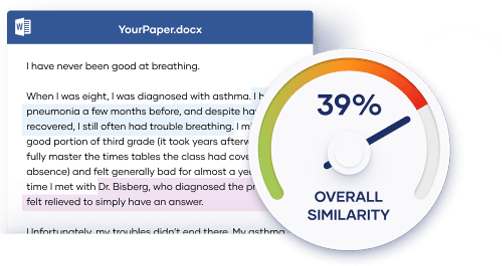What Is Plagiarism? | Definition & Examples
Plagiarism means using someone else’s work without giving them proper credit. In academic writing, plagiarising involves using words, ideas, or information from a source without citing it correctly. In practice, this can mean a few different things.
| Examples of plagiarism | Why is it wrong? |
| Copying parts of a text word for word, without quotation marks | It makes it seem like these are your own words. |
| Paraphrasing a text by changing a few words or altering the sentence structure, without citing the source | It makes it seem like you came up with the idea, when in fact you just rephrased someone else’s idea. |
| Giving incorrect information about a source | If readers can’t find the cited source, they can’t check the information themselves. |
| Quoting so much from a source that it makes up the majority of your text | Even with proper citations, you’re not making an original contribution if you rely so much on someone else’s words. |
| Reusing work you’ve submitted for a previous assignment, without citing yourself | Even though it’s your own work, the reader should be informed that it’s not completely new but comes from previous research. |
| Submitting a text written entirely by someone else (e.g., a paper you bought from a ghostwriter) | Not doing the work yourself is academically dishonest, undermines your learning, and is unfair to other students. |
Common questions about plagiarism
It’s easy to understand why you shouldn’t buy essays, but students often struggle with the details of quoting, paraphrasing, and referencing sources. Below, we address some questions and misconceptions students often have about plagiarism.
I need to quote and paraphrase a lot. Won’t my paper be full of distracting citations?
It’s true that some papers do feature a lot of citations. There are ways to reduce clutter by citing more efficiently, such as:
- Combining multiple citations into one set of parentheses (usually separated by semicolons)
- Not repeating the full citation when you cite the same source multiple times in a row
- Using ‘ibid.‘ to indicate a repeated citation (in certain styles)
- Omitting citations for information that is considered common knowledge
Do I need to cite a certain number of sources? Can citing too much be a bad thing?
There’s no fixed number of sources you should cite. Your use of sources should be based on strengthening your argument, not meeting a quota. A high number of citations isn’t inherently a good or bad thing. Some types of academic text (e.g., a literature review) are more likely to cite a lot of sources than others.
When you do think you’ve cited too much, it’s worth considering whether you need all the information you’ve included. All information should directly contribute to your argument, not just be tangentially related.
One thing you should avoid is quoting too much. If large portions of your text consist of someone else’s words, it distracts from your own arguments. It’s usually better to paraphrase unless you’re specifically analysing the language of the source (e.g., in literary analysis).
Is it better to just avoid using sources so I don’t risk accidental plagiarism?
No, using sources is an essential part of academic writing. Academic research is an ongoing conversation between researchers. Drawing on other sources, and positioning your own ideas in relation to them, is not optional.
But it’s understandable to be concerned about plagiarism. If you’re worried about the possibility of accidental plagiarism, make sure to:
- Quote and paraphrase sources correctly
- Manage and cite your sources using a reference generator
- Use a plagiarism checker before submitting your work to detect any problems
Is paraphrasing a kind of plagiarism?
No, paraphrasing is just a way of incorporating information from a source into your text by putting it into your own words. As long as you cite the source correctly, paraphrasing is the best way to incorporate information in most cases.
However, paraphrasing can be considered plagiarism if you:
- Don’t cite the source of the information, or cite it incorrectly
- Phrase the information in a way that’s too close to the original (e.g., just swapping out a couple of words instead of reformulating the sentence)
More tools and resources for avoiding plagiarism
Scribbr offers a variety of tools and services designed to help you with citations and plagiarism checking, including the best plagiarism checker available.
Reference Generator Citation Checker Citation Editing
And you can check out the in-depth articles below to learn more about the different kinds of plagiarism, its consequences, and how to avoid it:
- Types of plagiarism
- Self-plagiarism
- How to avoid plagiarism
- Consequences of plagiarism
- Academic integrity vs academic dishonesty
- Common knowledge
- How plagiarism checkers work
- Examples of plagiarism
- Plagiarism resources for educators
